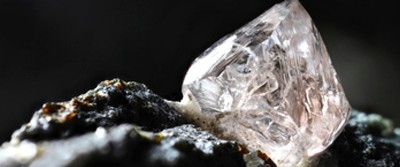A New Way to Synthesize Diamonds

By Kylie Wolfe
Diamonds are more than an icon of the jewelry industry. They’re used in medicine, quantum computing, biological sensing, and other industries. Their extreme hardness, optical transparency, and chemical stability are properties that make them highly sought after.
Using a substance found in fossil fuels, a new study at Stanford University’s School of Earth, Energy, and Environmental Sciences found that the right combination of pressure and heat can create pure diamond. Their work was published in Science Advances.
Understanding What’s Underground
Diamonds are made of carbon that’s crystallized hundreds of miles underground and exposed to thousands of degrees of heat (in Fahrenheit). Many of the diamonds we see today are a result of volcanic eruptions that brought them closer to the surface and made them easier to collect.
Through a microscope, diamonds have a unique crystal structure that contributes to their symmetry, as well as other desired properties. Their atoms are tightly bonded and arranged in patterns.
New Processes and Possibilities
Scientists have been making diamonds in labs for over 60 years. The process usually requires time, energy, and a catalyst, a factor that contributes to decreased quality. But researchers at Stanford, in collaboration with the SLAC National Accelerator Laboratory, have found a cleaner process.
"What's exciting about this paper is it shows a way of cheating the thermodynamics of what's typically required for diamond formation," said Rodney Ewing, Stanford geologist.
Their starting material, an odorless powder resembling rock salt, consisted of atoms arranged like those in a diamond crystal. Instead of pure carbon, these molecules are made of hydrogen and carbon, and are therefore considered diamondoids.
Researchers placed samples of the powder into a diamond anvil cell, a small pressure chamber that sandwiches samples between two polished diamonds. This amounted to 20 gigapascals of pressure. They also heated the samples with a laser to 1160 degrees Fahrenheit.
Under these conditions, the transformation happened in a fraction of a second. The carbon atoms immediately aligned, skipping other forms like graphite. The result? A diamond.
A Diamond a Dozen
The Stanford team’s method generates low quantities, but it helps them learn more about diamond formation and the conditions beneath the Earth’s surface. This process is more energetically efficient and doesn’t require a catalyst, potentially increasing the quality of the diamonds produced in this way.
"Starting with these building blocks you can make diamond more quickly and easily,” said Wendy Mao, Stanford mineral physicist, “and you can also learn about the process in a more complete, thoughtful way than if you just mimic the high pressure and high temperature found in the part of the Earth where diamond forms naturally."
Discussion Questions
- What materials and conditions are needed to form a natural or man-made diamond?
- What’s the difference between a diamond and diamondoid?
- What makes a diamond unique? And what about its carbon structure makes it so strong?
Vocabulary
- Carbon
- Diamond
- Gigapascal
- Thermodynamics